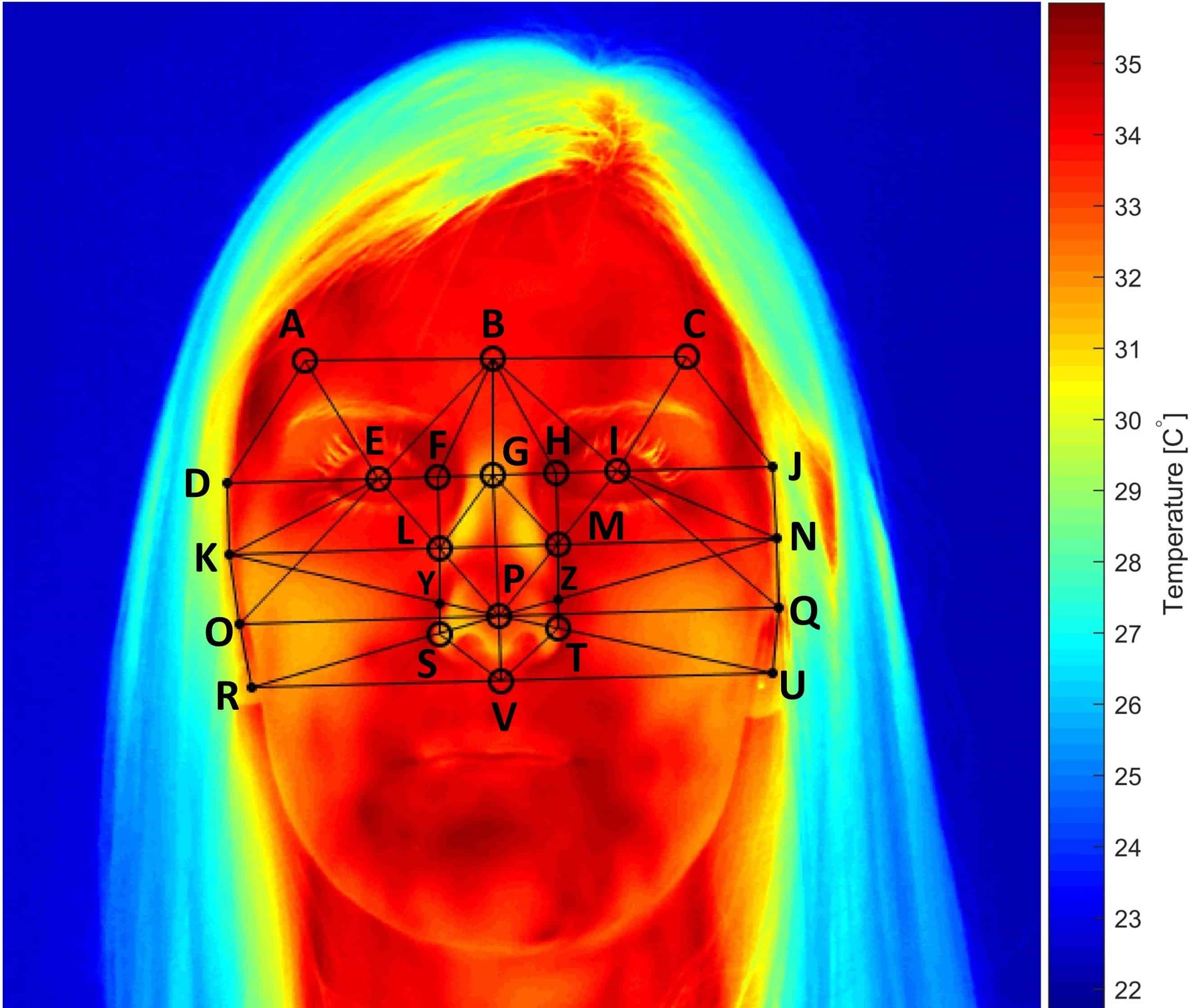
(Credit: Nottingham University)
Published in Human Factors, the research details how thermal cameras can measure subtle fluctuations in temperature, particularly in areas around the sinuses and nose. When participants carried out increasingly difficult tasks, this area of the face was observed to drop in temperature, as the autonomic nervous system took over and breathing patterns changed. It’s hoped the discovery could lead to a non-invasive method for assessing the concentration and strain levels of pilots and other professionals in high-stress environments.
“We expected that mental demands on an operator would result in physiological changes, but the direct correlation between the workload and the skin temperature was very impressive, and counter-intuitive – we were not expecting to see the face getting colder,” said Dr Alastair Campbell Ritchie from Nottingham’s Bioengineering Research Group.
“With this accurate way to estimate workload, we can develop methods that will assist the operator at times of maximum stress.”
According to the Nottingham team, recent advances in digital thermographic equipment mean that cameras can now be placed in a cockpit without being obtrusive. At the same time, improvements in resolution and computing power allow the technology to be programmed to recognise the operator and how he or she will react to a range of different mental demands.

(Credit: Nottingham University)
“The measurement of workload without needing to interrupt people to ask them to report how busy they are, has been challenging human factors specialists for many years,” said study supervisor Sarah Sharples, Professor of Human Factors and Nottingham.
“By bringing together our expertise in bioengineering, human factors and machine learning, we have developed a much better understanding of how physical changes associated with workloads manifest themselves as physiological symptoms, and how these symptoms translate into the parameters that we can measure.”
Supported by Airbus, the project is part of a wider EU-funded programme exploring novel technologies for aerospace. The next stage of the research at Nottingham will focus on operator workload in fine manual tasks requiring acute concentration as well as mental workload in situations requiring temporal and spatial awareness.
"Of all the approaches we’ve tried, facial thermography is the least intrusive, and has proved to be an excellent method,” said Adrian Marinescu, the study’s first author.
“It’s convenient, gives real-time data, and the cameras have been getting smaller, lighter and more affordable.”




Swiss geoengineering start-up targets methane removal
No mention whatsoever about the effect of increased methane levels/iron chloride in the ocean on the pH and chemical properties of the ocean - are we...